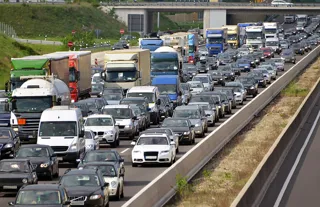Venson Automotive Solutions is providing a free white paper to fleet decision makers that aims to address the challenges associated with creating a fleet of vehicles beyond a 3.5T Gross Vehicle Weight (GVM).
The white paper, Operating Commercial Vehicles Beyond 3.5T GVW covers the three major areas of the upsizing process, personnel considerations, preparing your business and vehicles, and includes an expansion planning checklist for fleet managers.
Upgrading vehicles in size to create and run a more flexible, socioeconomically friendly fleet is becoming a more popular option but it has it challenges, says Venson.
Danielle Tilley, business development director at Venson Automotive Solutions, said: “There are huge benefits to be had from upsizing. For example, an average large delivery van can carry a load weighing 1,000 to 1,800kg, yet a 7.5 GVW truck can manage 3,000 to 4,500kg, a two to threefold increase, meaning the potential to run two less vehicles to carry out a similar workload is a viable option.
“When you factor in a 16-tonne GVW rigid trucks’ footprint isn’t usually vastly different to a 7.5 tonne truck, then you start to tick the social responsibility box too.”
Most standard passenger car driver licences only entitle their holders to drive vans up to 3.5-tonnes GVW, and fresh challenges present themselves when moving up to larger and more complex vans or light and heavy trucks, Venson says.
Changes to the licensing system introduced in 1997 means that a driver must be in possession of a Heavy Goods Vehicle (HGV) Class 2 licence to drive a 7.5-tonne GVW truck.
Tilley said: “Once fleet drivers have their Class 2, what’s stopping a further increase in vehicle size if its fits with your company’s business model? A driver with a Class 2 licence can drive any rigid truck way beyond 7.5 tonnes.
“Fleet decision-makers need to be thinking ahead. With these unprecedented times changing the way many businesses operate, there are new opportunities to be had; while it may not fit every business model, upsizing can reduce costs and improve productivity.
“The socioeconomic aspect of an upsize can give a competitive edge by demonstrating a responsible corporate image. Fleet managers shouldn’t feel overwhelmed by the process; with careful guidance and planning, and strategic thinking, evolving a fleet can be done smoothly and efficiently.”
You can download the whitepaper here.























Login to comment
Comments
No comments have been made yet.